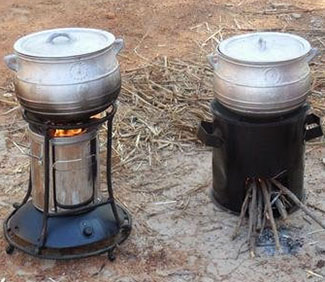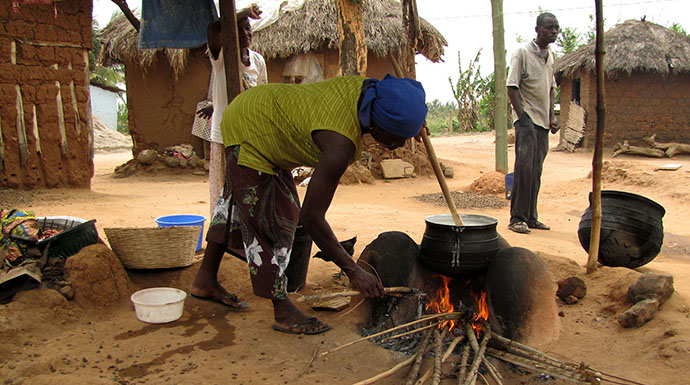Research on Emissions, Air Quality, Climate, and Cooking Technologies
in Northern Ghana (REACCTING)
Cooking over open fires using solid fuels like wood and charcoal is a widespread practice throughout the world. This behavior impacts local and regional air quality, global climate, and human health: household air pollution from biomass burning is estimated to contribute to four million premature deaths annually. In order to be effective and generate useful insight into potential solutions to this complex problem, cookstove intervention studies must both select cooking technologies that are appropriate for local socioeconomic conditions and cooking culture, and include comprehensive and interdisciplinary measurement strategies along a continuum of outcomes.
REACCTING (Research on Emissions, Air Quality, Climate, and Cooking Technologies in Northern Ghana) is an ongoing interdisciplinary randomized cookstove intervention study in the Kassena-Nankana Districts of Northern Ghana. The study tests two types of biomass burning stoves that were identified as having the potential to meet local cooking needs; the stoves also represent different “rungs” on the cookstove technology ladder, including an affordable and locally-made low-tech rocket stove and an imported, highly efficient gasifier stove. The 200 intervention households were randomized into four different intervention arms. In three groups, households received different combinations of two improved stoves, while the fourth group serves as a control for the duration of the two year study. (At the end of the study, these households will get to choose which stoves they would like.) Throughout the study period, ongoing measurements are made across groups at multiple steps in the causal chain linking the intervention to final outcomes of interest. These measurements assess stove use and cooking behavior, cooking emissions, household air pollution and personal exposure, health burden, and local to regional air quality.

Displayed are two pollution-reducing cookstoves introduced to Ghanian residents. Photo: Mike Hannigan. |
Preliminary data analysis suggests that households in the three intervention groups have been using their new stoves and have decreased their use of traditional stoves, though these effects vary across the different intervention arms: Groups A (two Gyapa) and C (one of each stove) have reduced their use of three stone fires more than Group B (two Philips). Results also indicate that households express a high demand for cleaner cooking technologies. Specifically, a set of choice experiments conducted at the beginning of the study shows relatively high demand for reduction in smoke from cookstoves as well as reduction in fuel use, while households placed relatively little value on reducing cooking time, and did not indicate a preference for domestically-made (as opposed to imported) stoves.
Subsequent analysis and modeling of results will tackle a range of interdisciplinary science questions, including examining ambient exposures to which the regional population is exposed, assessing how those exposures might change with different technologies and behaviors, and estimating the comparative impact of local behavior and technological changes versus regional climate variability and change on local air quality and health outcomes.
For more information see the study website and protocol paper.
Katie will be continuing her cookstove research in a new project that is described below.
Katie Dickinson
Center for Science and Technology Policy Research
katherine.dickinson@colorado.edu |


 Introduction
Introduction
